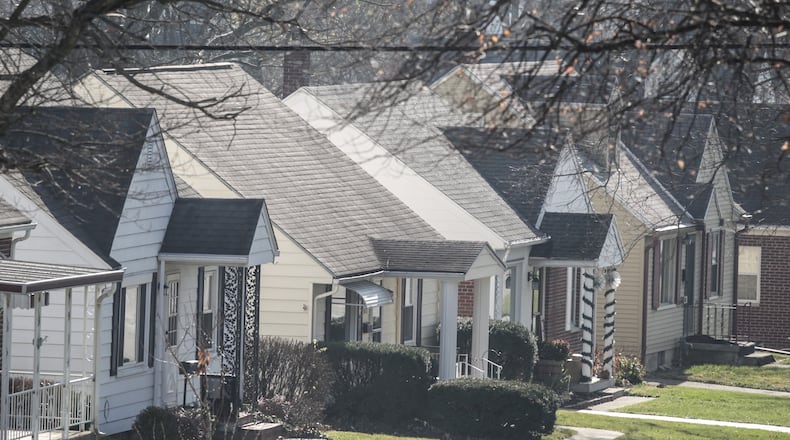Following a countywide reappraisal, the Ohio Department of Taxation rejected the county’s calculated 7.4% increase.
“They told us that they expected us to see an 18% increase, which was way off from what we had determined,” Keith said. “There’s still some confusion in our minds as to why the state used a different methodology this year than they’ve ever used in the past.”
After reaching an agreement with the state, the final residential property value climbed 15.5%, representing $3.1 billion of the gains, Keith said.
Property value increases are now in the double digits for all county jurisdictions, except Clay Twp. and Phillipsburg. Only two, Perry Twp. and German Twp., showed double-digit gains when the auditor sent the proposed tentative values to the state for approval in July.
The highest total percentage increases are now seen in Perry Twp. (20.1%), German Twp. (19.7%) and Huber Heights (18.4%). The final percentage more than doubled the auditor’s initial values in multiple jurisdictions. Phillipsburg, the only jurisdiction to show a decrease in the county’s first submission to the state tax commissioner, ended with an increase of 4.5%.
Huber Heights Mayor Jeff Gore said commercial development is up, population is on the rise, and homes are scarcer within the city.
“There’s lots of positives that are happening. And I think that’s been reflected in the increased property values,” he said. “That’s a good thing. All of us who live here appreciate having our properties valued higher because the home is our biggest investment.”
A property value increase doesn’t corelate directly with a property tax increase, Gore said.
“That’s always a concern to people, having their property taxes go up,” he said. “But people need to understand that an 18% increase in property value doesn’t mean an 18% increase in property taxes.”
Keith said whenever there is a an update, about a third of property owners see taxes increase, about a third are unchanged and taxes go down for a third.
“I don’t want to make it sound like that there won’t be increases, there are going to be tax increases as a result of this, but it’s not going to be at the 15% level or higher,” he said.
The county submitted proposed tentative values to the state on July 9 and received notice Aug. 31 that the state tax commissioner had approved the county’s 6% increase on commercial property values but rejected the valuation for residential values.
After nearly two months of negotiations, the county and the state agreed on bumping residential properties to around 15%.
“Never in my time in the auditor’s office have we announced the approval of our tentative abstract this late in the year,” he said. “Never have we had difficulty reaching an agreement with the Department of Taxation on property values.”
According to the July figures from the auditor’s office, 70% of residential properties gained taxable value and more than 81,000 properties saw double-digit percentage gains, even before the state’s higher number is factored in.
The tentative values released in July prompted owners of 4,021 parcels to ask the auditor for an informal review — most owners believing the county valued their property too high. Nearly half — 1,982 — resulted in the county decreasing the taxable value; 1,805 were unchanged; and 234resulted in an increase.
Kelsey Snively said he challenged the county’s reappraisal of his Kettering home after a preliminary double-digit increase.
Snively said the new value was inconsistent with its appraisal history and unwarranted because no changes had been made to the property since purchasing it.
“I also challenged because the county did not provide any evidence or reasoning for the increase,” he said. “And I feel that the increase will unnecessarily take tax money out of my pocket, which is money I could be putting into the property to actually increase its value.”
Property owners who participated in the informal review process are not subject to the revised increases and will receive notices from the auditor’s office with updated values within the week, according to the auditor’s office.
Final valuation notices for remaining property owners will be mailed out after Christmas, Keith said. Owners wanting to dispute the final value will need to file a complaint with the county’s Board of Revision after Jan. 1. Information on the Board of Revision process and the complaint form can be found at www.mc-bor.org.
The state rejected the initial tentative values submissions of at least 25 of the 41 counties in Ohio completing a revaluation or triennial update this year, Keith said.
The 15.5% residential increase in Montgomery County is comparable to other area counties performing updates in 2020, including some neighboring counties, Keith said. Preble County is reporting a 17.5% increase, with Darke County a 16% increase and Greene County a 15% increase.
A difference in assessment methodology resulted in a discrepancy between the county’s proposed values and the state’s required values, Keith said. When completing its reappraisal, the auditor’s office took into consideration the past three years of real estate data. The state, bucking past practice, relied only on the most recent year of sales data when analyzing the market, Keith said.
About the Author

